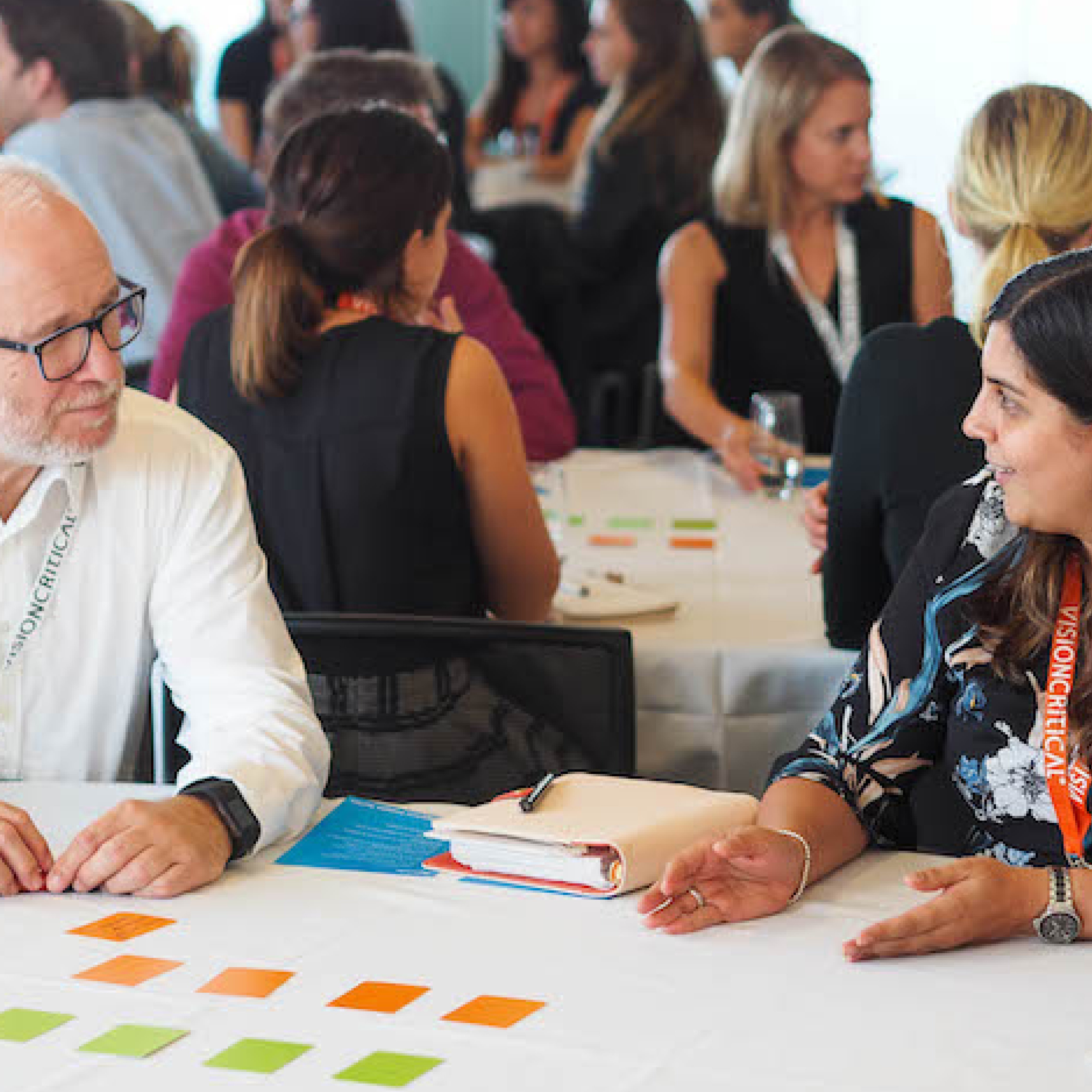Established in 1980, Manulife Singapore provides insurance, retirement, and wealth management solutions to meet the financial needs of customers across various stages of their lives. Their mission is: Decisions made easier. Lives made better.
We connected with Min Hung Cheng, VP and Head of Strategy and Customer Experience, and Phoebe Fong, Senior Manager Customer Experience from Manulife Singapore to chat about how they’ve adopted an “an outside, looking in” approach to improving customer experience.
Fast, agile access to a group of opted-in, highly engaged, and richly profiled customers gives them an efficient way to collect consent data, helping them make fast, customer-first decisions. Their efforts have been rewarded by a 15 points improvement in their Net Promoter Score between 2016 and 2018. In recognition of the transformative impact that have had, Manulife Singapore was recognized as a runner up for Alida’s 2019 Customer Experience Visionary Award.
Min, tell us about Manulife Singapore’s journey to focus more on your customers?
MIN - Historically, companies like ours make decisions based on what is easy and efficient for us, not what makes it easy for the customers. We used to work with the mindset of “we think we know what customers want.” That inside-out perspective simply does not deliver the desired results.
So in 2017, we refreshed our focus on customers, and began mapping the customer journey and identifying key customer touch points. We charted the end-to-end experience but we still struggled to truly adopt a truly outside-in perspective. The lack of customer input was really limiting our progress. The result was quick fixes to the problems “we” thought we had that didn’t improve the customer journey or improve our NPS scores.
A deep understanding of our business from our customer’s perspective was still missing.
So is that what led you to getting your insight community, Manulife Circle?
MIN - Manulife Circle helped us reframe the way we think, to become truly customer-first. That was a huge opportunity for us when we started in 2017. At that time, the ability to engage an insight community of 1500 customers in continuous conversations meant we could obtain feedback efficiently, stimulate conversations, and exchange ideas between members.
What’s the benefit of having fast, agile access to your customers?
MIN - Manulife Circle bridges the gap between what “we think” customers want and what customers actually want. Our customers have consented to participate. They are actively engaged with us through surveys, quick polls, simulation exercises, and online or offline group discussions. We’re able to use direct customer feedback to understand their pain points, test our hypotheses, and look at the customer journey through their eyes. The added layer of rich profiling with our personas will help inform our strategic initiatives even more.
PHOEBE - Manulife Circle is more efficient than any other methodology. Previously we would have had to rely on research vendors to get quotes and proposals. An expensive and slow process, taking five to six months from start to finish for one project. Manulife Circle delivers reliable, high quality insight in less than a month. And we can talk to our customers whenever we need to.
Who are your key stakeholders? And how do you work with them?
MIN - We work with many teams and stakeholders. For example, our customer experience team works with department heads across the business to help plan their initiatives.
As with any new program you need to get buy-in. To help, we launched with one of Alida’s partners, ABN Impact. They ran workshops with department heads from a few key lines of business. We educated them about what’s possible, shared inspirational stories and promoted our refreshed culture of focusing on our customers.
Internally we hosted a lunch-time session to communicate our wins more broadly and get more teams on board. Today our internal departments see the benefit of pulse checking and testing hypotheses with “real customers” and implementing their recommendations.
Can you share some examples of how you’ve improved customer experience with insight from your customers in Manulife Circle?
PHOEBE - The one engagement that stood out for us is our revamped Client Service Centre experience. For this, we had an experience map designed with all the ideal situations and crafted scenarios of what we “thought” customers would like. Those assumptions were then tested with real customers through a multi-modal approach including validating the experience through an in-person simulation. The participants were impressed with the simulation and offered additional feedback on further improvements. We implemented many of their suggestions and initial anecdotal feedback suggests customers are really happy.
MIN - NPS only tells you so much. For example, for our website we needed to look more closely at user metrics and preferences across the brands. Insights from Manulife Circle helped us identify navigation improvements, opportunities for customization and a more intuitive user-interface. We also informed the design of more interactive and engaging features. The website revamp resulted in a 40% increase in page views on our corporate website.
How do you know you’re making the right decisions about customer experience?
MIN - It is a process of continuous improvement. It is a simple equation. Start with a culture that is committed to meeting or exceeding customer expectations. Build process around that principle. Design products iteratively with ongoing feedback. And the result will be increased customer satisfaction, loyalty, and advocacy.
For us our overall relational NPS increased by 15 points between 2016 and 2018.
What is your advice for other companies who are working towards a more outside-in approach and best in class customer experience program?
MIN - To execute a customer-first mindset you have to talk directly to your customers and map the customer journey from their perspective. Some companies say they’re customer centric, but then they can’t actually explain HOW.
We collect NPS as a baseline metric and we have Manulife Circle for fast, agile access to a group of opted-in customers who want to give us their feedback because they know it will improve their experience with us.
But, culture is first and foremost. Being truly customer centric is not sustainable or scalable without the culture. When our customer focus was refreshed in 2017, we defined what it means for us, and developed a framework around it so we know where to focus.
How would you sum up the value you receive from your insight community?
Our Chief Customer Officer and Chief Transformation Officer, Li Choo Kwek-Perroy says it best:
“We believe we can improve our business by involving our customers who have vested interest in our innovations and improvements. Having an insight community, which we call our Manulife Circle, is an obvious way to do it. It is efficient to manage and allows customers to respond to us at their own time. Manulife Circle is a value added platform for customers to be seen, heard and valued, and it is a mutually beneficial happy relationship. 100% of our customer engagements have resulted in significant business decisions. Over time we are able to see the impact of engaging our customers regularly on their views.”







